This month we provide an update on the Hôpital de la Miséricorde and analyze controversial plans by Hydro-Québec to integrate an electricity substation into the haunted site. The ghost-ridden Hôpital de la Miséricorde has been empty for years and is starting to crumble. Located on prime real estate in Downtown Montreal...
Welcome to the forty-second installment of the Haunted Montreal Blog!
With over 200 documented ghost stories, Montreal is easily the most haunted city in Canada, if not all of North America. Haunted Montreal is dedicated to researching these paranormal tales, and the Haunted Montreal Blog unveils a newly-researched Montreal ghost story on the 13th of every month! This service is free and you can sign up to our mailing list (top, right-hand corner) if you wish to receive it every month on the 13th!
Our February blog explores St. Joseph’s Oratory and the alleged hauntings unfolding within the shadowy interior of the gigantic church on the slopes of Westmount.
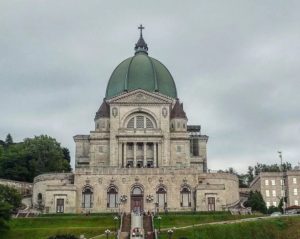
While Haunted Montreal is in winter mode and will not offer any more public ghost tours until April, 2019, we are pleased to announce our Haunted Pub Crawl is now open for business! Running every Sunday of the year, the tour in English starts at 3 pm and the tour in French is at 4 pm.
Please see our new Haunted Pub Crawl webpage for more details, the full schedule and to buy tickets.
For those seeking ghost walks during our off-season, Haunted Montreal is still offering private tours for company outings, school groups, bachelorette parties and other gatherings of all types. Please contact info@hauntedmontreal.com to organize a private tour for your group. These ghost tours require very warm clothing during the winter months and the Haunted Mountain tour is not offered once there is snow on the ground due to dangerous and icy conditions on Mount Royal / Otsirà:ke. The haunted pub crawl is also available as a private tour.
Haunted Research
Saint Joseph’s Oratory of Mount Royal (Oratoire Saint-Joseph du Mont-Royal in French) is Canada’s largest church and also has one of the largest domes in the world. The magnificent building is a Roman Catholic minor basilica and national shrine and is located on the western slope of Mount Royal’s Westmount Summit. Located at 3800 Queen Mary Road, more than 2 million visitors and pilgrims visit the Oratory every year.
While the basilica is undoubtedly popular with the living, it is also said to attract visitors from beyond the grave. Indeed, according to the French-language Quebec Huffington Post, St. Joseph’s Oratory is on the list of the top 11 most haunted sites in Montreal:
“The famous cathedral where Brother André worked has had several visitors from beyond the tomb apparently. Some tourists have indeed seen priests in tunics, and when they approached them… they evaporated into thin air! In addition, it is said that Brother André himself appears from time to time in the little chapel where his heart is exposed.”
Photographer Chris Koelbleitner captures the spooky atmosphere nicely in his shot called “The Haunting of St Joseph’s Oratory.”
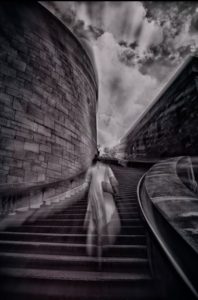
Before delving into these alleged hauntings, it is important to look at the Oratory’s remarkable story. The basilica is dedicated to Saint Joseph and actually enshrines a statue of him, which was authorised a Canonical coronation by Pope Pius X on 19 March 1910. Saint Joseph can be seen as the saint of everyday life, to whom one turns for help with both minor worries and at life-defining moments. Traditionally, one confides to the care of Saint Joseph issues related to family, work, health, death and material needs. Saint Joseph’s Oratory of Mount Royal is the largest shrine in the world dedicated to him.
The magnificent Saint Joseph’s Oratory also contains a diversity of architectural styles in its cruciform plan, including Beaux-Arts and Italian Renaissance designs. Ironically, an oratory suggests a small place and is defined as a “place of prayer, such as a small chapel or a room for private devotions”. The first small wooden oratory dates from 1904, but it was the seed for what would become the largest church in Canada.
Because the basilica is on the Westmount slope, to reach the Crypt Church and Oratory, visitors and pilgrims can climb one of three parallel flights of 283 concrete steps. Two are for climbing on foot and the other, in the center, is for the more devout. These people must ascend on their knees, uttering a prayer on each and every one of the 283 steps.

Once inside, the Oratory offers a series of dark corridors and candle-lit places of worship, along with dusty relics such as hundreds of abandoned pairs of crutches lining the walls. These serve as evidence of miraculous healings from earlier times, provided by a humble monk who would go on to become a Saint.

One of Montreal’s twelve Saints, Brother André Bessette was believed to possess healing powers through his devotion to Saint Joseph and his application of a special oil ointment to all believers who requested it. Many pilgrims suffering from illnesses, handicaps, blindness, etc. poured into his basilica, including numerous non-Catholics. In many cases, he was able to miraculously heal them through divine prayer to Saint Joseph, whom Brother André credited all of his reported miracles to.
Born Alfred Bessette in 1845 in Mont-St-Gregoire, southeast of Montreal, he was so sickly as a baby that his parents baptized him immediately. They feared he wouldn’t survive, but miraculously he did. Although he was frail and suffered from a permanent stomach ailment, he was very much alive.
After the death of both his parents in 1857, Bessette, then age 12, was taken in by a family in nearby St-Cesaire. His nine brothers and sisters were scattered to live among relatives and friends. Unskilled and illiterate, Bessette drifted from job to job, working as a blacksmith, baker and then a shoemaker.

In 1870, André Bessette entered the novitiate of the Congregation of Holy Cross and took on the name of Brother André. Unimpressed with his frail health and lack of skills, his superiors appointed him to be “doorkeeper, nurse and lamp tender” at the congregation’s Collège Notre-Dame. Located in Côte-des-Neiges, a small village at the time, his duties included running errands, cutting hair and managing the laundry.
The humble Montreal monk said of his time at the college: “My superiors showed me the door, and I stayed there for 40 years.” Despite the fact that he never advanced beyond the most lowly positions within his religious order, Brother André would go on to become the most popular religious figure in Québec in the 20th century.

Brother André’s first miracle occurred in 1877. When his colleague, Brother Alderic, complained of a leg injury, Brother André took a bit of oil from a lamp that was burning in front of a statue of Saint Joseph. He offered it to Brother Alderic and told him to rub it on his aching leg and to pray to Saint Joseph for relief. Miraculously, following the procedure, the leg was completely healed.
The word spread of his healing powers and soon Montrealers of all sorts were lining up to ask Brother André for his assistance. His reputation grew, and before long he was known as the “Miracle worker of Mount-Royal”. Despite facing criticism from numerous adversaries, many of whom called him a “charlatan”, he had the strong support of the diocese. Officials at the Congregation of Holy Cross were impressed with his inexplicable healing powers and wanted him to build a chapel to welcome the sick. Fearing a developer would buy the property across the street from Collège Notre-Dame, in 1896 the Congregation bought land for $10,000 where St. Joseph’s Oratory is today.
In 1904, Brother André established St. Joseph’s Oratory, originally a small, 15-by-18-foot wooden chapel across the street from Collège Notre-Dame. It was built by a colleague named Brother Abundius.
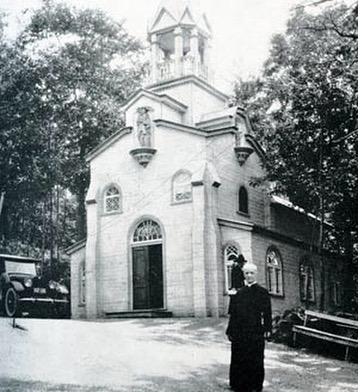
Within a few years, the original chapel was overwhelmed by visitors, many of them seeking divine cures for medical conditions. Despite expansions, the space was insufficient for the number of guests, so in 1914 work began on St. Joseph’s Crypt Church, which was built into the side of the mountain and inaugurated in 1917 with seating for 1000.

Realizing that they would need even more space, construction of the domed basilica began in 1924. The project was stalled after the stock market crash of 1929, due to a severe worldwide economic depression. Regardless, Brother André continued healing the sick, even as he got older and sicker himself. Plagued by a stomach ailment since birth, his condition began to worsen with old age.

At 91 years old, Brother André died of acute gastric catarrh in the infirmary of Our Lady of Hope convent on January 6, 1937. During his funeral, over million people filed past his coffin to pay their respects. He was interred in an alcove inside the crypt behind the Votive Chapel at Saint Joseph’s Oratory. His tombstone reads: Pauper, servis a humilis (a poor and humble servant).
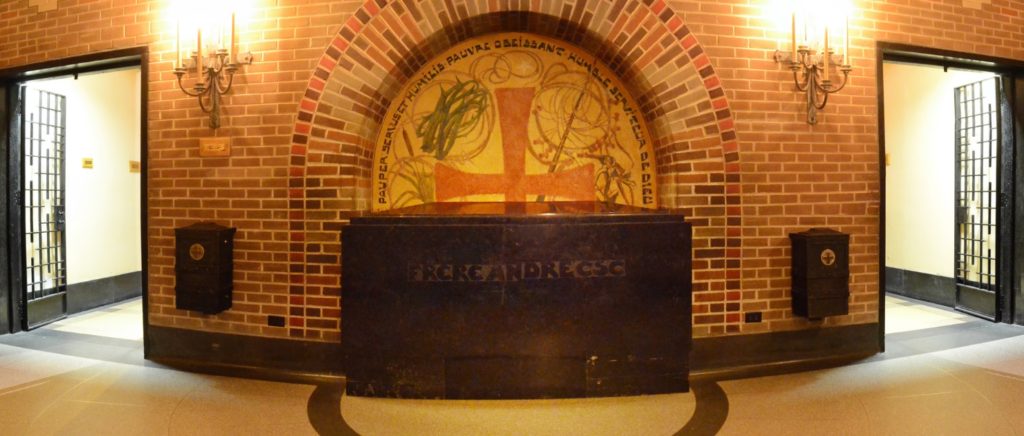
Prior to his death, Brother André had requested that his heart be preserved as a relic to be used to protect his basilica. In the Catholic faith, bones and other body parts of holy figures are often preserved and kept as relics and placed in reliquaries, often beneath church altars, so worshippers can venerate them.
Unsure at first how to prevent the organ from decomposing, church authorities decided to have Brother André’s heart preserved in a glass urn filled with a formalin solution. It was then displayed to worshippers and pilgrims on a marble pedestal beneath the gigantic, yet unfinished, basilica.

St. Joseph’s Oratory, while still under construction, was inaugurated in 1955, with a seating capacity of 2,200 and a standing room capacity of 10,000. As the construction continued, a religious-themed garden was laid out on the slopes behind the basilica. With the final completion of the Oratory in 1967, the number of pilgrims continued to increase. The Congregation of Holy Cross was proud of its legendary accomplishment.
However, scandal struck on Thursday, March 16, 1973 at about 5 p.m., when thieves broke into the Oratory and swiped Brother Andre’s heart from its pedestal. The clergy broke into a panic when they realized that the sacred relic had gone missing. Some began praying, whereas other called the police.

According to investigators, the theft appeared to be very professional. To retrieve the heart, the thieves had picked three locks to open a steel door and an iron grille. Without attracting the attention of any clerics or security guards, the thieves then chiselled the urn off its marble pedestal and smuggled it out of the basilica undetected.
Before long, an anonymous francophone caller rang up the Journal de Montréal and threatened to destroy the heart unless he was given $50,000. The caller directed the newspaper to a car parked at the corner of Cremazie and Drolet Streets. Inside, a roll of film was located which contained photos of the missing heart. Authorities at the Oratory rejected the demand. With no leads to go on, the police were completely baffled.
After a gruelling 645 days, Brother André’s heart was finally located after police received a tip. Famous lawyer Frank Shoofey directed them to a house in southwest Montreal where officers recovered the heart in a basement.

No arrests were made, and the heart was returned to the Oratory.
Investigative blogger Kristian Gravenor of “Coolopolis” claims to have solved the mystery about the identity of the thieves. According to Gravenor, on the day of the theft, two criminals named Peter Fryer and Bobby Addlin were sitting outside the Condi Tavern with Bobby Matticks of Montreal’s West End Gang. Two of the criminals were about to be given lengthy sentences for robberies and Addlin thought he could barter to reduce their jail time if they had something valuable to exchange.
Later that day, using their skills as professional thieves, they stole Brother André’s heart. Needless to say, ultimately their plan did not work because the Oratory refused to pay the ransom. Eventually, the thieves directed the lawyer to the heart’s whereabouts. Rumours swirled that the thieves either felt guilty for their deed or were actually confronted by the spirit of an angry Brother André, who demanded the return of his heart in order to protect the basilica, as was his original intention.

Officials at the Oratory decided to place the heart under tighter security, including metal bars to prevent any more robberies. Notably, it is often said that Saint Brother André’s spirit appears from time to time in the little chapel where his heart is again on display. Some speculate that the good Saint returns to guard his heart, providing a sort of holy surveillance, and to ward off any thieves who would dare consider stealing his precious organ again.
For many years, everything returned to normal at the basilica. On October 19, 2004, bells across Montreal tolled when the Oratory held its centennial. All the bells of all the churches on the island of Montreal were meant to ring at 9:00 a.m., though not all churches participated. At 9:05 a.m., the basilica rang its bell in response to the celebration. That year, the Oratory also was designated a National Historic Site of Canada and Canada Post issued a special ‘Saint Joseph’s Oratory, Quebec’ stamp.

However, scandal hit the Oratory again in 2008 when a class-action lawsuit for sexual abuse was formally launched against the Congregation of Holy Cross. A total of 223 victims claimed that they had been sexually molested by over 40 members of the Congregation in their youth. These allegations included perversions at Montreal’s Collège Notre-Dame between 1950 and 2001, where Brother André used to work as doorkeeper.
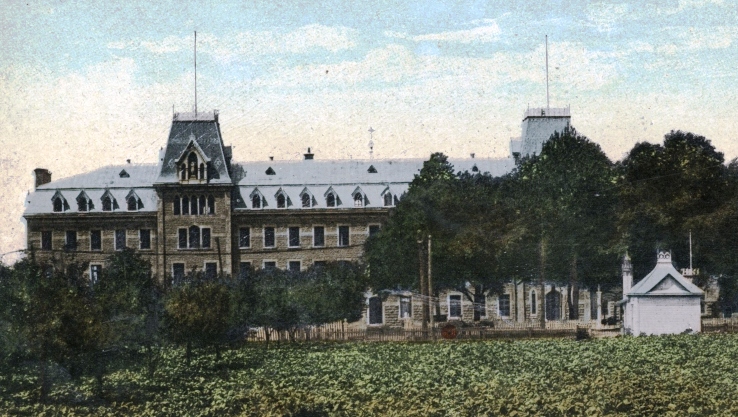
Despite the brewing scandal, the Oratory had another major celebration in 2010. The Vatican announced that Brother André would be canonized after yet another miracle was attributed to him. A 9-year-old boy in a coma was suffering from severe brain injuries after a cycling accident and he recovered after his family prayed to Brother André. On October 17, Pope Benedict XVI canonized him as Saint Brother André.
Hoping to put the pedophile scandal behind them, in 2013 the Congregation of Holy Cross apologized and paid up to $18 million to compensate 206 victims for abuse that occurred at three of its institutions, including Collège Notre-Dame. Father Jean-Pierre Aumont, Canadian provincial superior of the Congregation of Holy Cross, said in a statement at the time: “Some members of our Congregation have broken their vows and failed in their mission.”
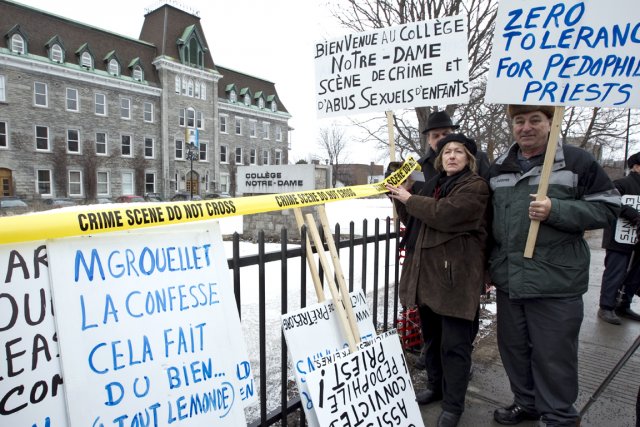
Notably, this class action suit did not include St. Joseph’s Oratory.
A second class action lawsuit, which did name the Oratory along with other Holy Cross institutions, was launched when roughly 40 more alleged victims came forward after hearing other men share their horror stories through the 2013 lawsuit. The Oratory was included in the new lawsuit amid allegations that some of the abuse occurred there. One of the complainants, who went on to become a famous organist, recalled being sexually molested at the Oratory by sisters, priests and even his music teacher, starting at 8 years old.

According to the lawyer representing the plaintiffs, there could be up to 500 more victims who were assaulted between the 1940s and 1980s. Holy Cross ran dozens of orphanages, schools, and colleges where abuse was known and covered up.
The newer lawsuit was first rejected by Quebec Superior Court in 2015, but then allowed to move forward by the Quebec Court of Appeal. The case, now before the Supreme Court of Canada, is called “L’Oratoire Saint-Joseph du Mont-Royal v. J. J.“

If more than 40 of the Congregation members were molesting children since the 1940s, it seems almost certain that sexual abuse was rampant and systemic within the Congregation of Holy Cross before then, raising questions about how much Saint Brother André knew about these perverse activities during his tenure at Collège Notre-Dame and the Oratory. Whether or not this will be investigated, the scandal still threatens to undo the prestige of Saint Brother André, including his 2010 canonization and all of his holy and miraculous deeds.
Returning to the alleged hauntings at the Oratory, as noted by the Huffington Post, some tourists have reported seeing mysterious priests wearing tunics, and when they approached them, the priests suddenly evaporated into thin air.
According to one witness: “When I saw a group of several priests wearing old-style tunics wandering through the Basilica, I thought there was some sort of ritual going on. They were moving as though in some sort of procession or ceremony, and many of them held candles. When I went to get a closer look, they all just evaporated into thin air, like the smoke of incense. I couldn’t believe my eyes!”

Rumours suggest that this group of vanishing priests dates back to earlier times in the Basilica’s history, long before it was wracked with open scandal. Indeed, one of the victims represented by the lawsuit said he wouldn’t be surprised if the ghosts in tunics comprise a gang of pedophile priests who never left the Oratory, but haunt it as a way of paying for their deranged sins.
Whatever the case, staff at the Oratory do not like discussing these shameful issues, preferring less controversial topics, such as the $80-million renovation the Oratory is currently undergoing. This will include a new 360-degree Montreal observatory at the top of the basilica that will be home to “the highest window in Montreal,” as well as a welcome center and a new illuminated pavilion aimed at attracting pedestrians.
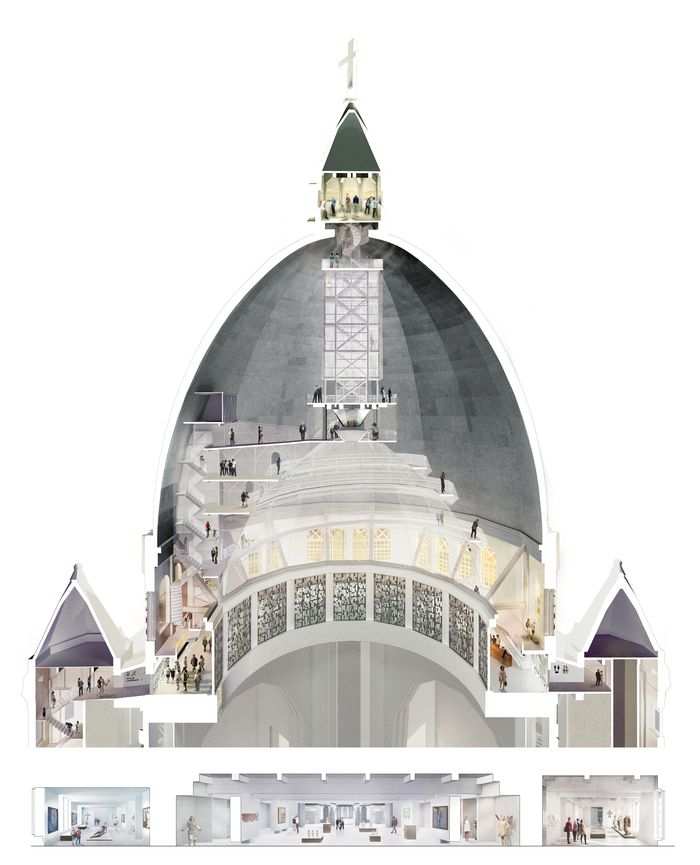
Work is expected to be completed in 2020.
Perhaps to distract the media from all the bad press, during the Christmas Season in 2018, the Oratory featured an unorthodox Nativity Scene that was described as everything from “hipster” and “avant-garde” to “ridiculous” and even “blasphemous”. The Three Wise Men, riding Segways, delivered Amazon Prime boxes while other characters stared into smartphones. In other nods to the 21st century, Mary was holding a cup of Starbucks coffee and a cow devoured gluten-free feed.

The unsubtle message was that with all of these consumer distractions, none of the characters in the scene were paying any attention to Baby Jesus.
Today, as one of the most allegedly haunted sites in Montreal, the Oratory has a lot to offer. With so much history, some of it wonderful and some of it beyond disgusting, it gives the visitor pause to reflect on how both good and evil can simultaneously exist in religious settings. As such, St. Joseph’s Oratory, with all its dark, candle-lit chambers and creepy relics of the past is a perfect spot to search for ghosts and spirits, whether they be a group of vanishing priests in tunics or one of Montreal’s controversial twelve Saints.
Company News
After much research and hard work, Haunted Montreal launched our new Haunted Pub Crawl on Sunday, February 10!
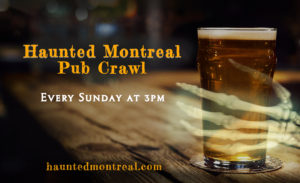
Led by a professional ghost storyteller, the Haunted Montreal Pub Crawl visits four haunted bars. Starting at Charlie’s American Pub in Downtown Montreal on Bishop Street, guests not only learn about many of the haunted drinking establishments in the city, but also hear Montreal’s most infamous ghost stories.
While sipping suds, guests enjoy haunted pubs, spine-tingling Montreal ghost stories and learn about the historical forces that transformed the ancient Indigenous island of Tiotà:ke into Ville-Marie, an austere French colony founded by Catholic evangelists.
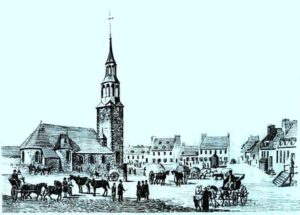
After the British invaded, the city became a booming financial center and crime hub, a site of violent rebellion and subversive revolution and finally into Canada’s most haunted city.
Clients hear the paranormal tales behind Charlie’s American Pub, the recently-burned John Doe Pub, mysterious McKibbin’s Irish Pub, the famous Sir Winston Churchill, funeral-home-cum-discotheque Club Le Cinq and, of course, Hurley’s Irish Pub, where a ghost known only as the Burning Lady haunts the establishment.

The ghost storyteller regales guests with Montreal’s most deranged and infamous ghost stories, including Simon McTavish, a Scottish fur baron known to toboggan down the slopes of Mount Royal in his own coffin, the ghost of John Easton Mills, Montreal’s Martyr Mayor who perished while tending to typhus-stricken Irish refugees during the Famine of 1847, and Headless Mary, the ghost of a Griffintown prostitute who was decapitated by her best friend in the shantytown in 1879. She returns every 7 years to the corner of William and Murray Streets, still looking for her head!
Join Haunted Montreal on this unforgettable pub crawl, where you can drink some spirits with a spirit, all the while learning about the city’s deranged history and hearing spine-tingling local ghost stories!
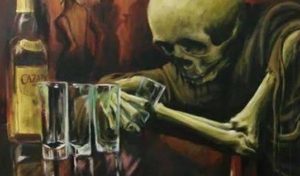
For full details, including a description, the starting location and schedule, please visit our new webpage! Join us at 3 pm any Sunday of the year for a haunted pub crawl in English or at 4 pm in French! Tickets are now on sale!
Haunted Montreal also offers private tours and pub crawls for company outings, school groups, bachelorette parties and all types of gatherings. Please contact info@hauntedmontreal.com to organize a private tour.
We are also pleased to promote a new book called Macabre Montreal.
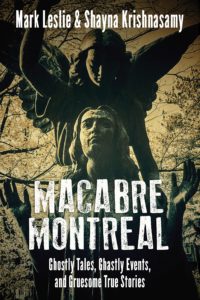
Written by Mark Leslie and Shayna Krishnasamy, it is a “collection of ghost stories, eerie encounters, and gruesome and ghastly true stories from the second most populous city in Canada.
The authors write:
“Montreal is a city steeped in history and culture, but just beneath the pristine surface of this world-class city lie unsettling stories. Tales shared mostly in whispered tones about eerie phenomena, dark deeds, and disturbing legends that take place in haunted buildings, forgotten graveyards, and haunted pubs. The dark of night reveals a very different city behind its beautiful European-style architecture and cobblestone streets. A city with buried secrets, alleyways that echo with the footsteps of ghostly spectres, memories of ghastly events, and unspeakable criminal acts.”
With the introduction written by Haunted Montreal, Macabre Montreal is a must-read for anyone interested in Montreal’s dark side.

Haunted Montreal would also like to thank all of our clients who attended a ghost walk during the 2018 season or more recently!
If you enjoyed the experience, we encourage you to write a review on our Tripadvisor page, something that helps Haunted Montreal to market its tours. If you have any feedback, please email us at info@hauntedmontreal.com so we can improve our visitor experience.
Lastly, if you would like to receive the Haunted Montreal Blog on the 13th of every month, please sign up to our mailing list on the top right of this page.
Coming up on March 13: The Grey Man
Sara Hart-Snowbell remembers her childhood, growing up with her four brothers and sisters, in a haunted house on St. Urbain Street in the Mile-End. Located between Fairmount and St. Viateur streets, from the mid 1940’s to the mid 1950’s, Sara’s family had to endure invisible hands grabbing them, ghostly rectangular lights appearing, flying knives, restless spirits and a mysterious and shadowy “Grey Man”. While the family moved out when Sara was 12, some members are still troubled by memories of the haunted house they lived in so many decades ago.
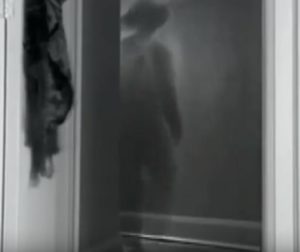
Donovan King is a postcolonial historian, teacher, tour guide and professional actor. As the founder of Haunted Montreal, he combines his skills to create the best possible Montreal ghost stories, in both writing and theatrical performance. King holds a DEC (Professional Theatre Acting, John Abbot College), BFA (Drama-in-Education, Concordia), B.Ed (History and English Teaching, McGill), MFA (Theatre Studies, University of Calgary) and ACS (Montreal Tourist Guide, Institut de tourisme et d’hôtellerie du Québec).



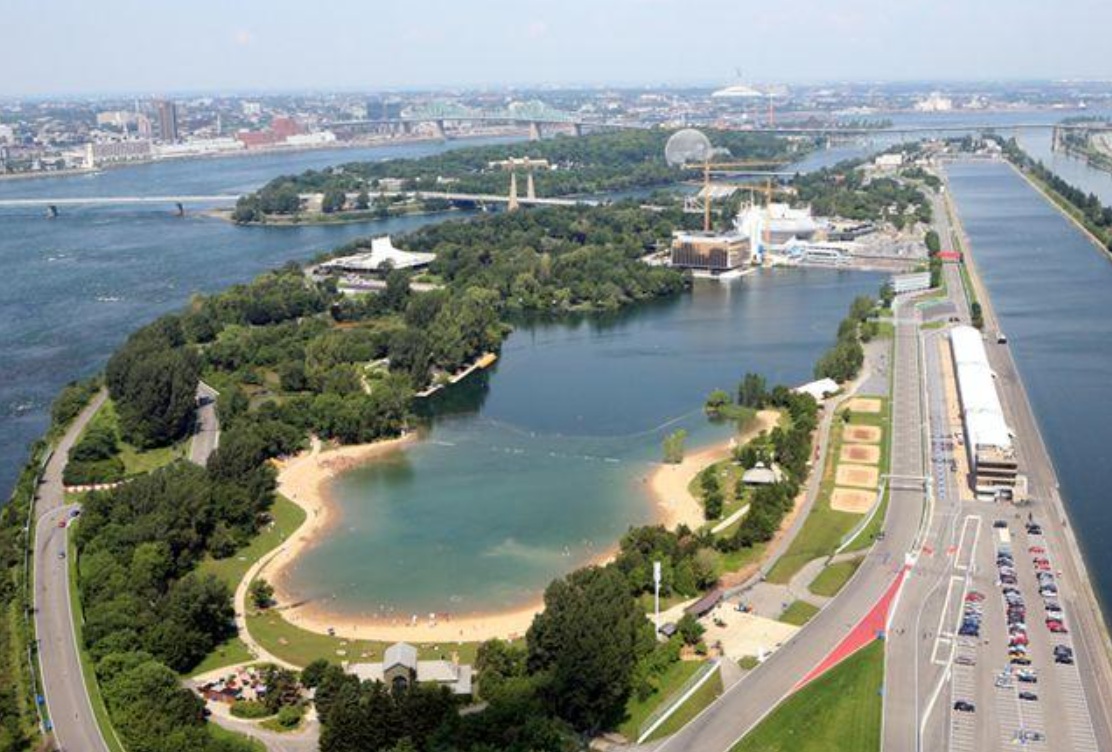
I took tour through the Oratory in winter of 2001 and learned of Father Andre’. I was with 2 friends and had lagged behind at one of the displays and was proceeding on the catch-up. I noticed the fantastic echo of the building and I was alone (or so I thought) so I went ahead and jokingly chorused a line from ‘Ace Ventura’ – “AuhhhhhhL Righty Theeeeeen” like a chorus boy, out loud….just for a personal giggle.
As I continued on a few more yards, proud of how great it sounded, I came to the long wall of glass cases where many images of Father Andre’ were hanging. It was a at this point that I looked back to where I was to notice a very familiar face on a maintenance man dressed monotone, who was standing in a ray of light from the window, leaning on a dust mop, not moving and pleasantly smiling at me. It did not ‘click’ at first because I was embarrassed but then I did a double take. The resemblance was jaw dropping. He didn’t say a word, Just smiled and nodded.
I blushed then quickly went on to get my friends who had rounded the next corner already so I could show them but he was gone when we returned just a moment later. Perhaps everybody has a doppelganger but this one happens to be at the location of his twin.
I still wonder…